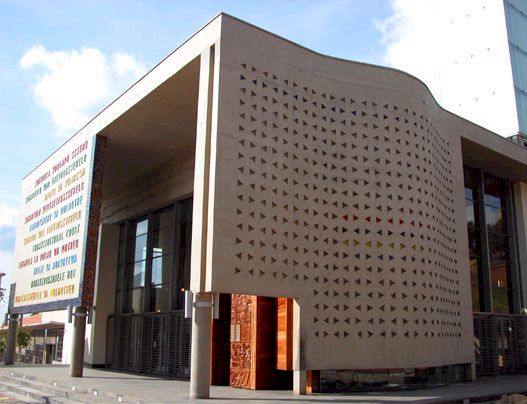Constitutional Court judges do argue
In response to the “male rape” judgment by the
Excuse my ignorance, but do these judges each come up with a ruling (like in a game of rock, paper, scissors) or do they discuss the ruling? What I want to understand is whether Justice Langa could or did try to convince the majority of his point of view?
The short answer is no. A longer answer would be that the eleven judges first read all the documents submitted to them, then listen to the advocates making their arguments on behalf of their clients while they also grill those advocates on any conceivable aspect of the case. Then the judges retire to a beautiful room where they all sit around a big round table (it looks a bit like a huge tree stump) to discuss the case.
I think there is a vote at first to see who supports what position. They will then argue their positions and at some point the Chief Justice will appoint one of the judges who supports the majority view to write the majority opinion for the Court. The judge will then write a draft judgment (with some help of his or her clerks) and this will be circulated to the other judges. They might make suggestions for things to add or to take out. Some judges will say, well, I will support your opinion if you add this or take that out.
In the end all the judges who agree with the majority judgment signs on to it but it is published under the name of the main author.
Judges who do not support the majority judgment or want to add their two cents worth can write their own judgment. In the death penalty case – the first heard by the
In any case, the judges have plenty of time to argue with one another and to try and convince the other judges of their opinion. The previous Chief Justice, Arthur Chaskalson, appeared to have been particularly good to get others to agree with him. Chief Justice Langa does not seem to hold the same sway. But whoever talked a hole in the head of those judges who signed on to the male rape majority opinion should really be kept in check. And the judges who signed on to that judgment should really feel a bit embarrassed.

3 comments:
Thanks for a fantastic blog! As far as i know, the Concourt doesn't work how you have described it - which is how the US Supreme court works. The CJ assigns cases to judges before oral argument without knowing whether they represent the majority or minority. I think they do it that way to try and promote consensus-finding. I agree that the Masiya judgment is pathetic. This is the kind of reasoning I would expect from some of the more conservative or traditional judges, but, as you put it, what were O'Regan and Mokgoro smoking? At least Langa provided some sanity. A unanimous decision would have been too depressing for words!
My version of how the Court works is what Justice Sachs told me one day several years ago. Maybe they have changed the way they do things? I am not sure assigning a case before oral argument will build consensus. Since Chaskalson left the consensus that has sort of disintegrated. There are now far more dissenting opinions than three years ago.
Dear Prof De Vos
Thanks for these blogs on the 'anal rape' saga, now apparently (and for weighty reasons) re-dubbed the 'male rape' saga. I (who was the presiding officer in the original Masiya decision) agree wholeheartedly with this insight(and those in the other comments below and elsewhere) advanced by you and others. See also my criticsm of the CC's decision under the blog 'Constitutional Court's conservative slip showing?' I also routed some of my comments mentioned there to some colleauges at the UP (Tukkies) in the hope of eliciting some academic debate (and possibly writings) on whether the CC's decision was right or wrong - here we should keep in mind the possiblity of (strictly speaking) retoactively recognizing cimes under custmary international law (that were not regarded as crimes under common law pre-1994)in order to prosecute and punish people who committed serious human rights transgressions before the dawn of the new constitutional democracy.
Post a Comment